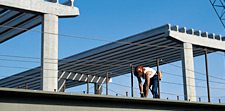Performance Measurement


A key tool for improving work zone safety and mobility is tracking and analyzing work zone performance. This involves developing performance measures (national, state, project-level), encouraging widespread use of measures, tracking measures over time, and using the findings to identify and make improvements.
Key areas for performance measures include delay/queues, user costs, exposure, safety, and public perception. Of interest are measures that are useful at the national program level and for state and local transportation agencies, as well as measures that resonate with road users' experiences in work zones. Performance measures have a clear role in systems management, but can also be used in an outreach function for educating the public and providing traveler information.

Process Review Toolbox
This Work Zone Process Review Toolbox contains tools to help agencies conduct an effective Work Zone Process Review. Process reviews help assess the effectiveness of a program or a set of policies and procedures and help address and manage the safety and mobility impacts of work zones.
Performance Measurement Development
Developing work zone performance measures and targets for those measures takes careful consideration of agency goals and policies, performance expectations, project types, decisions the agency can influence, available data, and data collection capabilities. Guidance, study results, and other tools can help agencies develop effective measures.
Performance Measurement Examples
This page contains examples from State DOTs and other organizations demonstrating how they are measuring and reporting on work zone performance.
I-95 Corridor Coalition Performance Measures Course
This web-based course was developed by the I-95 Corridor Coalition and the Consortium for ITS Training and Education (CITE). The course examines various aspects of performance measurement from the characteristics of performance measures to the steps of their development. It includes a discussion of the current state of the practice, illustrated by a description of the approaches used in several states, with special emphasis on congestion.
